
Ft. Myers, Florida
Birding Around Las Vegas, Favorite Places Far Away

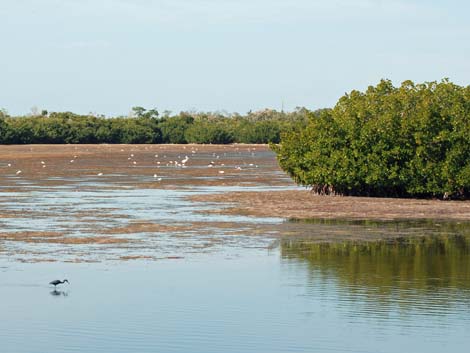 |
Overview Ding Darling NWR, located on Sanibel Island, Florida, is situated on a subtropical barrier island in the Gulf of Mexico. The refuge is part of the largest undeveloped mangrove ecosystem in the United States, and two impoundments (totaling 850 acres) are managed to provide foraging habitats for resident and migratory birds (also to control saltmarsh mosquitoes!). The refuge is world famous for the spectacular bird populations that include notable species such as Wood Stork and Roseate Spoonbill. An auto tour, several foot and bike trails, and two canoe trails provide close-up access to an amazing array of birds and other wildlife. Link to Map. |
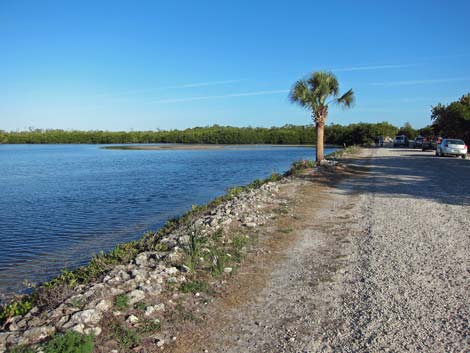 |
Description Ding Darling is a maze of large and narrow waterways, each lined with red mangroves. An auto tour road winds along a causeway providing broad views across open water and narrow passageways between hedgerows of mangrove. An observation tower provides bird's-eye views over one large lake, revealing shallow mud flats and deep channels. Shorebirds and wading birds jostle in the shallower water, while Red-breasted Mergansers, Double-crested Cormorants, and Anhinga chaise fish in deeper waters. Occasionally, an Osprey will swoop in to catch fish scared up by the birds or thrown back by fishermen. Trails also wind through the refuge, providing quieter and more intimate encounters with wildlife. |
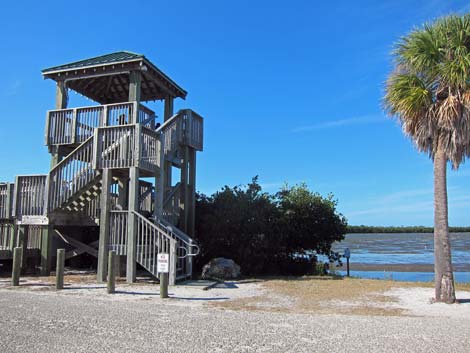 |
The visitor center is large and well-staffed. Displays include species to see on the refuge, habitats and ecosystem relationships, and the history of the refuge, including information about J. N. "Ding" Darling and his artwork. Volunteers at the information desk are ready to provide brochures and answer questions. The main refuge area primarily is influenced by the ocean, and the waterways are salty. A separate refuge unit, the Bailey Unit, protects freshwater ponds, which support ducks and rails. |
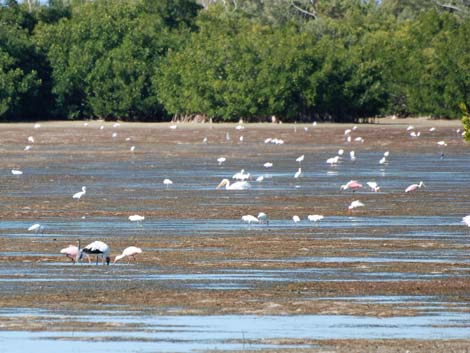 Wood Stork feeding with Roseate Spoonbills |
Location The refuge is located approximately 15 miles southwest of Fort Myers on Sanibel Island. Driving southwest out of Fort Myers on McGregor Blvd, pay the $6 per car toll to cross the Sanibel Causeway onto Sanibel Island (return is free). On the island, turn right onto Periwinkle Way. Drive west on Periwinkle Way for 2.5 miles to Palm Ridge Road (signs for Captiva and Refuge). Turn right onto Palm Ridge Road and drive 0.3 miles to a stop sign. Continue straight (now Sanibel-Captiva Rd) for 2.0 miles to the refuge entrance on the right (watch for signs). The Bailey Unit is located south of Palm Ridge Road, about 3 miles southeast of the main entrance. Driving southeast heading from the main refuge towards the mainland, drive 2.1 miles to a stop sign. Turn left onto Tarpon Bay Road and drive south for 0.7 miles to the unpaved Bailey Unit parking access road, which is on the right. Watch for the sign. Parking is a few yards down the access road. |
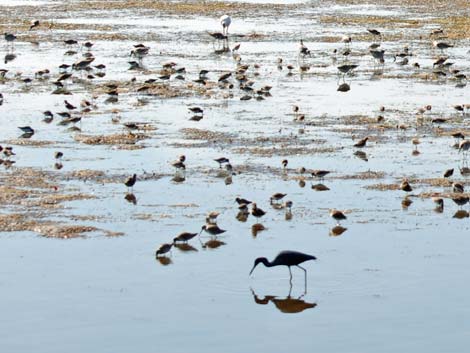 |
Hours Day-use only. The Wildlife Drive (Auto Tour) is closed on Fridays. Otherwise, the drive is open daily, generally opening near sunrise (7:00 or 7:30 AM depending on season) and closing near sunset (5:00 and 8:00 PM, depending on season). The Education Center (Visitor Center) is open 9:00 AM to 4- or 5:00 PM, depending on season. Check the official website for details. Fees $5 per vehicle; $1 per bicycle or hiker (Jan. 2012). Don't forget the toll bridge fee. |
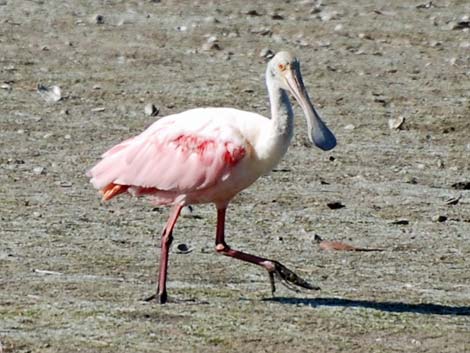 Roseate Spoonbill |
Specialties Ding Darling is a wonderful place to see south Florida birds up close and personal, as the birds have more-or-less habituated to the presence of non-threatening humans. Expect good views of Wood Stork, White Ibis, Roseate Spoonbills, and Anhinga. Little Blue Heron, Reddish Egret, White Pelican, Atlantic Brown Pelican, Double-crested Cormorant, and Red-breasted Merganser can also be seen at close range. An array of shorebirds will keep your eye keen for something new. Always keep an eye out for American Alligators. Mangrove Cuckoo are a rare sight, but keep an ear out for their raucous calls. For More Information Visit the official NWR website or check related sites such as the Ding Darling Society. |
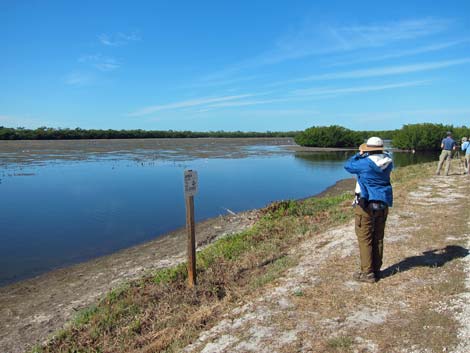 |
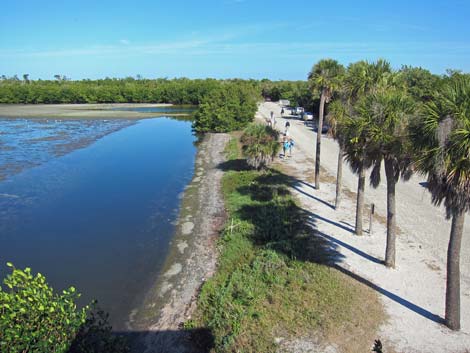 |
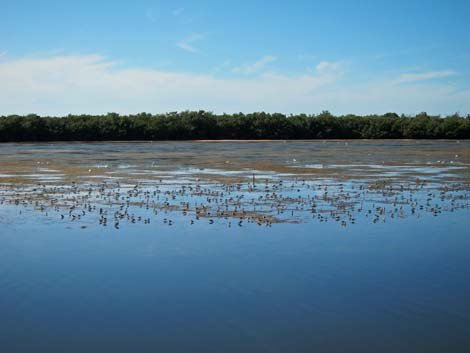 |
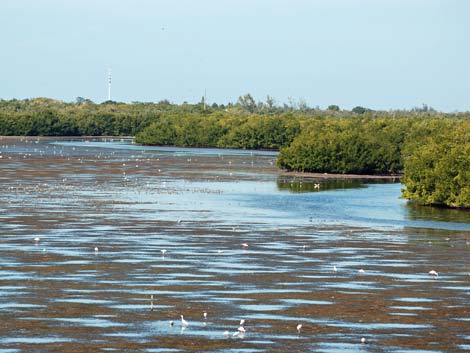 |
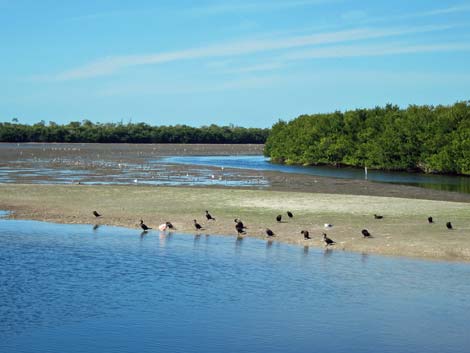 Double-crested Cormorants and Roseate Spoonbill |
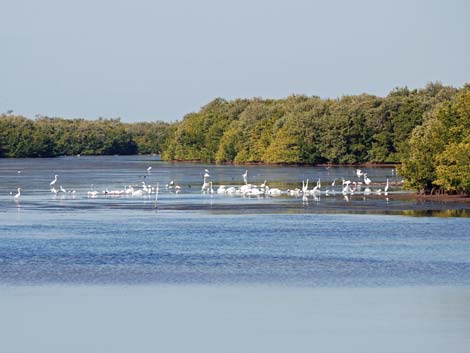 Lots of white waders |
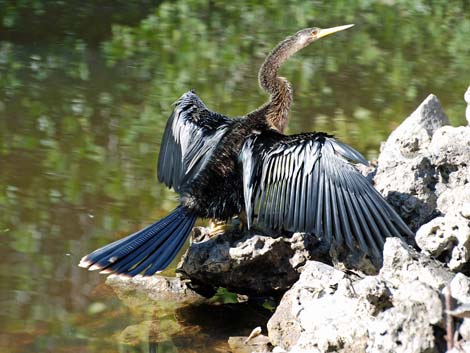 Anhinga |
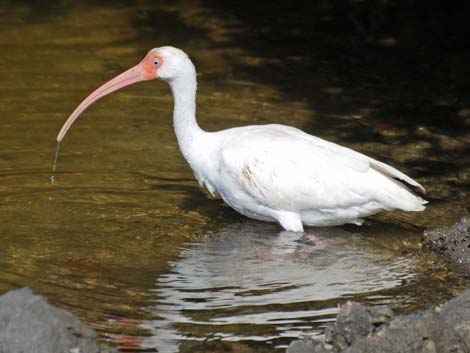 White Ibis feeding |
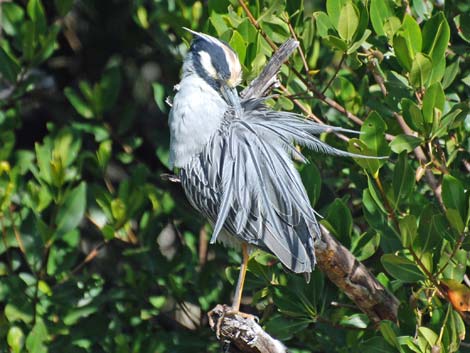 Yellow-crowned Night Heron preening |
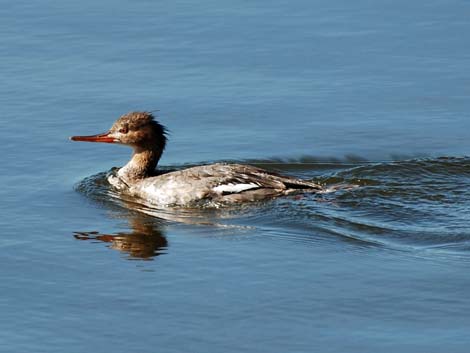 Red-breasted Merganser |
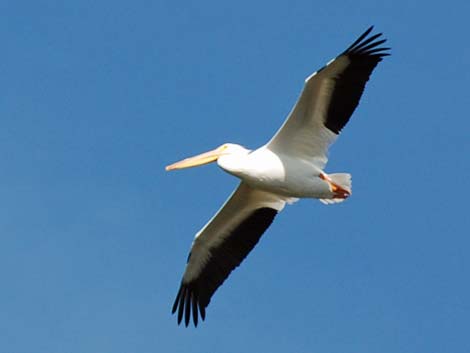 White Pelican soaring |
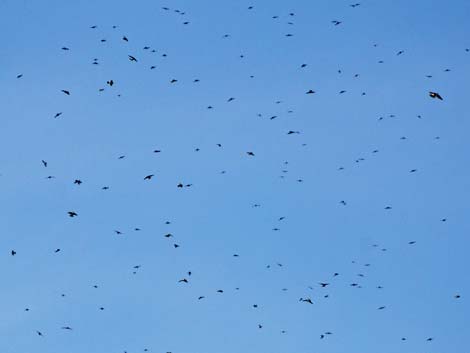 A sky-full of Tree Swallows |
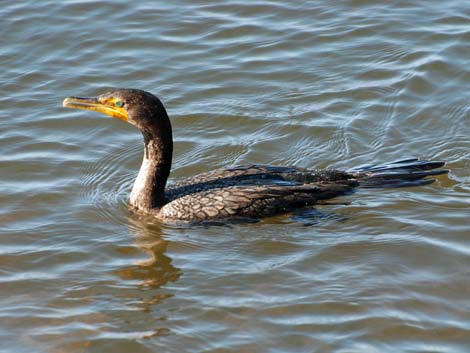 Double-crested Cormorant fishing |
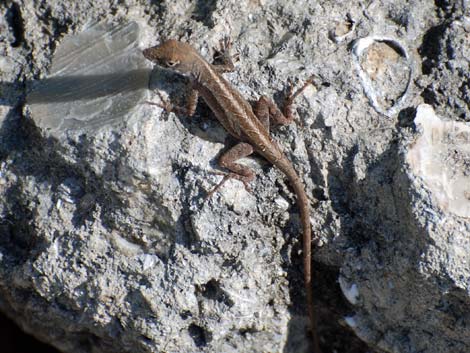 Brown Anole (non-native) basking in the sunshine |
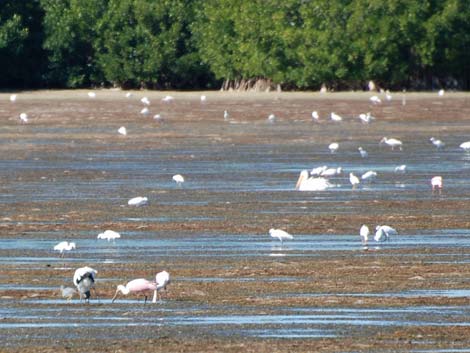 Mixed birds in shallow pond |
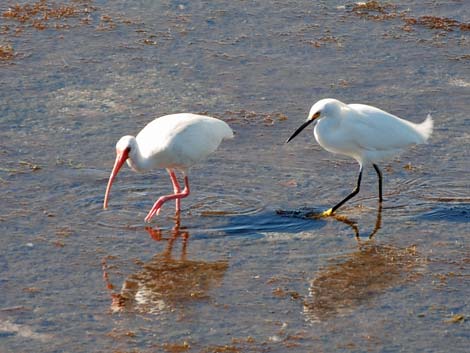 Feeding together in shallow water |
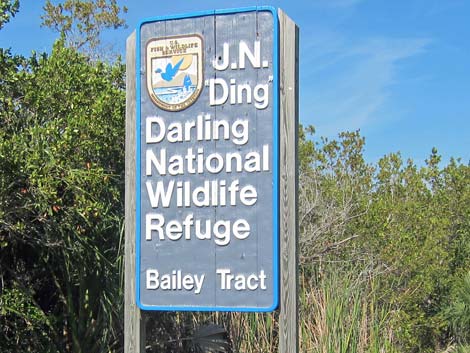 Bailey Unit entrance sign (view north) |
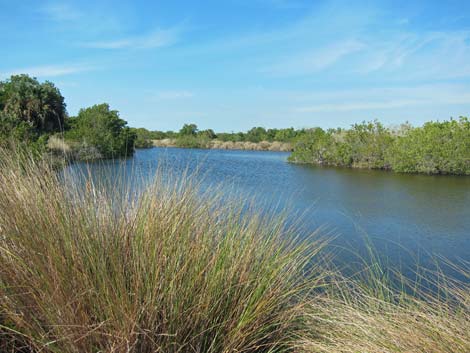 Bailey Unit freshwater pond |
Happy birding! All distances, elevations, and other facts are approximate.
![]() ; Last updated 240322
; Last updated 240322
| Birding Around Las Vegas | Glossary | Copyright, Conditions, Disclaimer | Home |